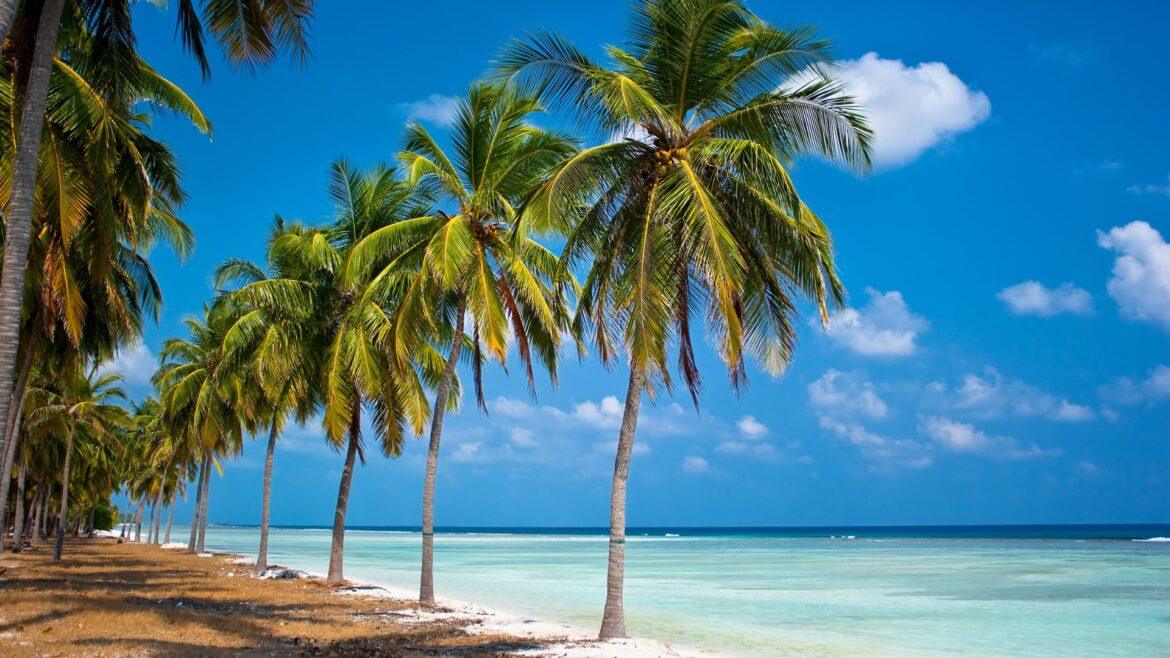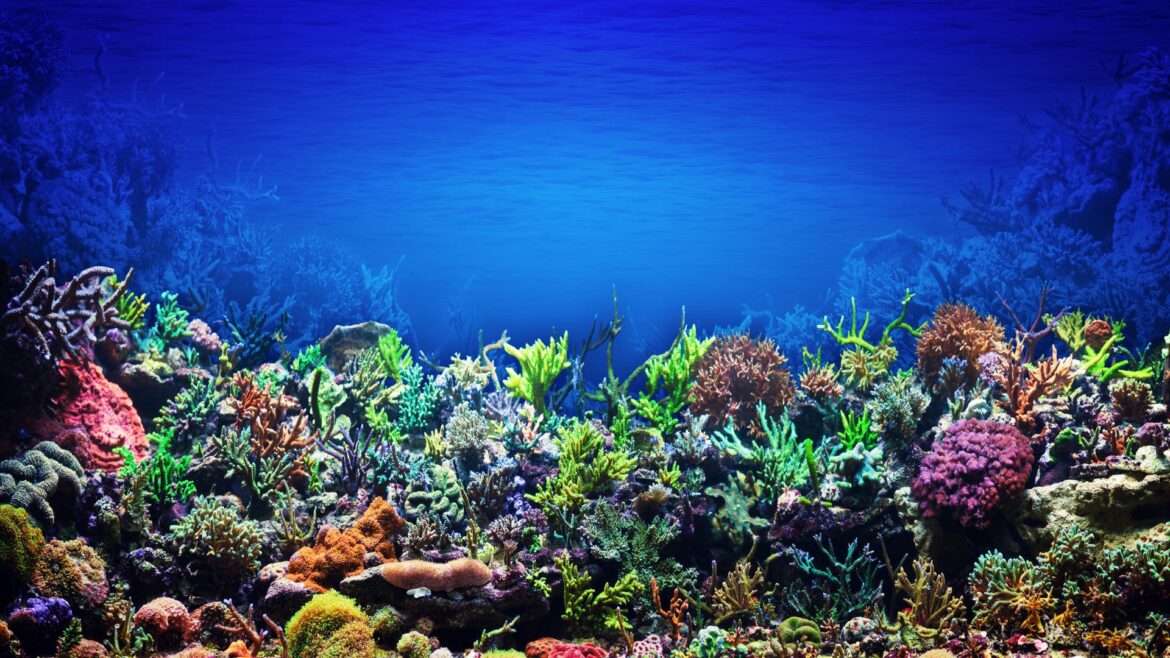लक्षद्वीप द्वीपसमूह में प्रवाल विरंजन की घटना: कारण, प्रभाव और संरक्षण के उपाय
लक्षद्वीप प्रशासन के पर्यावरण एवं वन विभाग ने लक्षद्वीप द्वीपसमूह में प्रवाल विरंजन की रिपोर्ट दी है।

Development activities in Ladakh must be done keeping in mind the ecological threat and impact in the region
Lakshadweep is an Indian archipelago in the Arabian Sea and a union territory by status, It is a group of 36 islands and has stunning natural vistas and vibrant culture. It boast of pristine white-sand beaches, crystal-clear turquoise waters, and rich coral reefs, making them a paradise for beach lovers and water sports enthusiasts. It is home to several indigenous communities as well which have distinct cultural practices and occupations.
The tribes in Lakshadweep have distinct cultural practices and occupations which are highly dependent on the natural resources of the region. Nearly every house hold is involved in some aspect of coconut cultivation, be it farming, harvesting or processing. Coir (coconut fibre) production is a significant local industry. Some people are also involved in toddy tapping (extracting sap from coconut palms), which is used to make a local alcoholic beverage. Fishing is another major occupation and source of income. There are some who are still involved in traditional boat-building and navigation.
With the development of eco-tourism, more inhabitants are getting involved in the tourism industry, working in resorts, as tour guides, or in related services. Tourism in Lakshadweep, while beneficial for the economy, can have several adverse effects on its delicate ecology. The ecological landscape of the Lakshadweep Islands is diverse and unique, characterized by its coral reefs, lagoons, marine life, and coastal vegetation. Their preservation is important. Some of the main concerns are:
Lakshadweep is home to some of the most pristine coral reefs in India. The beautiful turquoise waters which puts it at par and above with other tourist islands are a result of the thriving coral reefs in the region. Tourism activities, such as snorkelling, scuba diving, and boat rides, can lead to physical damage to these reefs. Anchoring boats, touching or walking on corals, and pollution from boats can all cause significant harm to these fragile ecosystems. Sunscreen, oils, and other pollutants introduced by tourists can cause coral bleaching and death. If damaged, coral reefs are very slow to recover and can take 10 to 12 years.
Tourism in Lakshadweep can disturb marine life in several ways. Increased human presence and noise can disrupt the natural behaviour of marine species, including breeding and feeding patterns. To cater to the culinary demands of tourists, there might be an increase in fishing activities, which can lead to overfishing and depletion of marine species. Increased boat traffic can lead to collisions with marine animals like turtles, causing injuries or fatalities
An influx of tourists leads to increased waste generation, which the Lakshadweep islands may not be equipped to handle efficiently. Improper waste management can result in littering, pollution of beaches and waters, and harm to both terrestrial and marine life. Plastics can end up in the ocean, entangling marine life or being ingested by animals, leading to injury or death. Inadequate sewage treatment facilities can result in the discharge of untreated sewage into the sea, harming marine ecosystems.
The development of tourism infrastructure, such as hotels, resorts, and recreational facilities, often requires land clearing and construction, which can lead to habitat destruction. Clearing land for development can lead to the loss of mangroves and coastal vegetation, which are crucial for protecting shorelines and providing habitat for wildlife. Coconut Palms are the most prominent vegetation on the islands, forming the backbone of the local economy. Destruction of these vegetation covers will affect the local occupations dependent on coconuts and bananas. Construction activities can destabilize the soil, leading to erosion and loss of land.
The indigenous communities of Lakshadweep have traditionally been conservation-minded, with a deep respect for their natural environment and a lifestyle that reflects sustainable practices. The people of Lakshadweep are facing the challenge of balancing their traditional ways with the pressures of modernisation and increased connectivity to the wider world. There is a growing openness among the younger generation to embrace new opportunities, including education, technology, and tourism. While there is a cautious openness to new ways, the indigenous communities are also keen on preserving their heritage and ensuring that any development is in harmony with their traditional values and the fragile ecosystem of the islands.
Lakshadweep Development Corporation and Lakshadweep Tourism Development Corporation are some of the Indian government agencies operating in the region and looking at the mindful development and prosperity of the region.
To mitigate the adverse impacts of tourism on the ecology and culture of the Lakshadweep islands, it is essential to implement sustainable tourism practices. Regulated tourism is one option. Limiting the number of tourists and regulating tourism activities can help minimize environmental damage. Educating tourists about the ecological sensitivity of the region can promote responsible behaviour, but is hard to bank on as a robust measure. It is important to implementing waste management systems and promoting eco-friendly practices. Active conservation programs for vegetation cover, coral reefs and marine life will be imperative and be a point of proactive care of in any developmental projects in the region.

लक्षद्वीप प्रशासन के पर्यावरण एवं वन विभाग ने लक्षद्वीप द्वीपसमूह में प्रवाल विरंजन की रिपोर्ट दी है।

Department of Environment & Forest of Lakshadweep Administration Reports Coral Bleaching in Lakshadweep Islands.

Discover the best places to travel in 2025 — from tropical beaches and cultural cities to hidden gems and adventure spots. Find your perfect travel destination this year!

Augmented Reality (AR) is becoming increasingly ubiquitous, shaping industries across the globe, including tourism.

